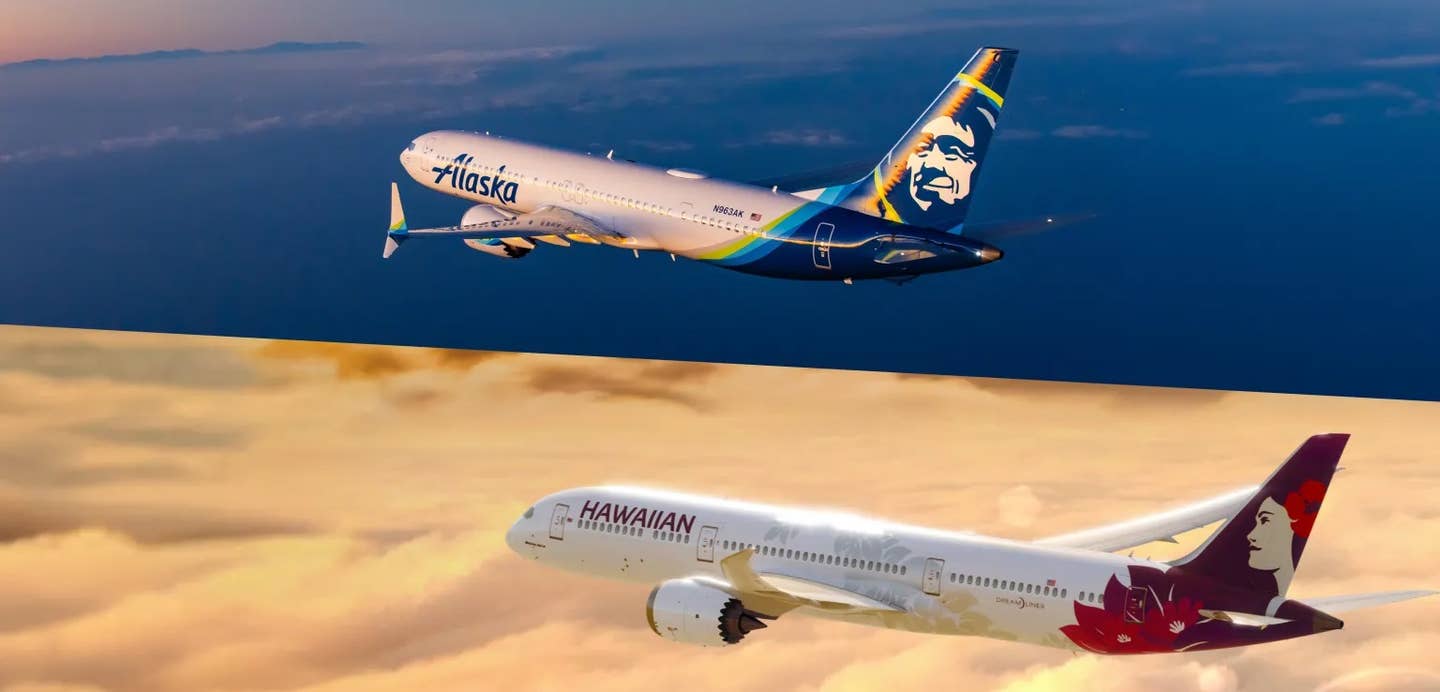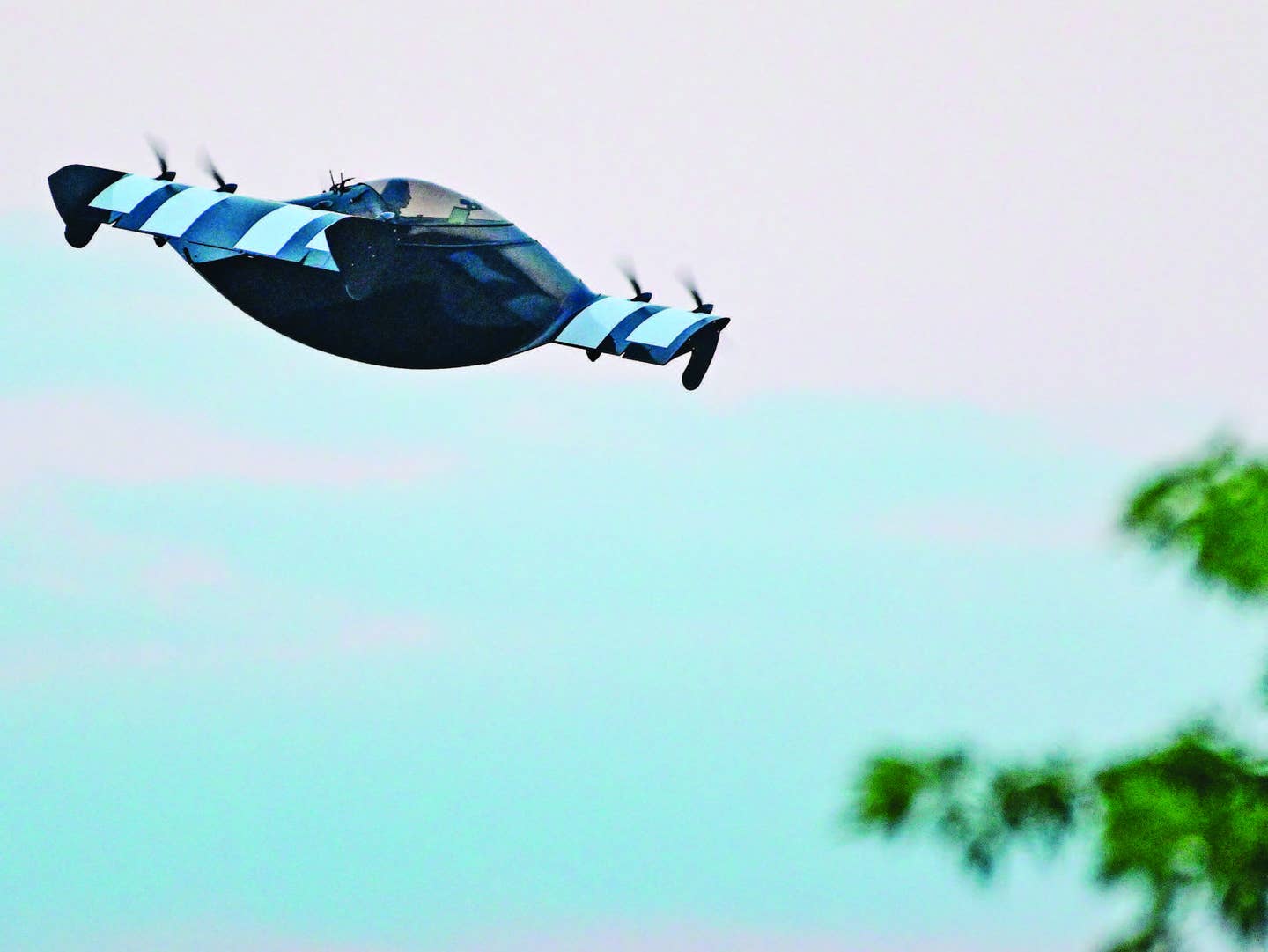Alaska Airlines Seeks to Acquire Hawaiian Airlines
Alaska Airlines and Hawaiian Airlines may soon merge to become one of the largest air carriers in the world.

The companies expect the proposed acquisition to close in 12 to 18 months. [Courtesy: Alaska Airlines/Hawaiian Airlines]
Alaska Airlines and Hawaiian Airlines may soon merge to become one of the largest air carriers in the world. On Sunday, Alaska Air Group Inc. (NYSE: ALK) announced plans to acquire Hawaiian Holdings Inc. (NASDAQ: HA).
According to a statement from the air carriers, the Seattle-based airline will "acquire Hawaiian Airlines for $18 per share in cash, for a transaction value of approximately $1.9 billion, inclusive of $0.9 billion of Hawaiian Airlines net debt."
An identical statement was also published by the Hawaiian Airlines media division.
The transaction agreement has been approved by the boards of both airlines but is conditional pending federal regulatory approval. Both companies expect the deal to be closed in 12 to 18 months.
“This combination is an exciting next step in our collective journey to provide a better travel experience for our guests and expand options for West Coast and Hawaii travelers,” said Ben Minicucci, Alaska Airlines CEO. “We have a long-standing and deep respect for Hawaiian Airlines, for their role as a top employer in Hawaii and for how their brand and people carry the warm culture of aloha around the globe. Our two airlines are powered by incredible employees, with 90-plus-year legacies and values grounded in caring for the special places and people that we serve.
“I am grateful to the more than 23,000 Alaska Airlines employees who are proud to have served Hawaii for over 16 years, and we are fully committed to investing in the communities of Hawaii and maintaining robust Neighbor Island service that Hawaiian Airlines travelers have come to expect. We look forward to deepening this stewardship as our airlines come together, while providing unmatched value to customers, employees, communities, and owners.”
Peter Ingram, Hawaiian Airlines president and CEO, shared the optimism of the proposed merger.
“Since 1929, Hawaiian Airlines has been an integral part of life in Hawaii, and together with Alaska Airlines we will be able to deliver more for our guests, employees and the communities that we serve," said Ingram. "With the additional scale and resources that this transaction with Alaska Airlines brings, we will be able to accelerate investments in our guest experience and technology, while maintaining the Hawaiian Airlines brand."
If the merger goes through, the combined organization will be based in Seattle under the leadership of Alaska Airlines CEO Ben Minicucci, and what the companies refer to as a "dedicated leadership team" will be established to focus on integration planning.
What Do the Pilots Think?
Pilots of both airlines took to social media to voice their opinions. It is clear both companies have their fans and detractors. While Alaska Airlines boasts a larger purse and pilot pool to draw from, Hawaiian was praised repeatedly for good service and customer care. Many pilots predicted there would be growing pains with the merger, especially with pilot seniority integration.
According to longtime pilots at Alaska Airlines, there were similar issues when Alaska acquired Virgin Airlines in 2018. When the two airlines merged, there were senior pilots at Virgin, which had just begun service in 2007, with 10 or so years of experience who thought they should be at the top of the seniority list along with Alaska Airlines pilots who had been with the company for decades.
Another question raised is what impact the Alaska-Hawaiin merger could have on hiring requirements and preferred qualifications, especially given the well-documented pilot shortage. Most airlines are looking for FAA ATP-certified pilots with at least 1,500 total flight hours. Although it is not required by some, 1,000 hours turbine pilot in command (PIC), turbojet/turboprop experience in complex flying environments, and a college degree are preferred.
Both airlines have similar routes, and those will likely also be impacted by the merger.
Some pilots raised concerns that it would create a monopoly and therefore would not be allowed to proceed, citing as an example the proposed Spirit Airlines and JetBlue merger. Other pilots noted that the merger, if allowed, will provide more financial stability for Hawaiian Airlines, which is still trying to recoup losses from the suspension of passenger operations during the COVID-19 pandemic.
In its media release, Alaska Airlines stressed that the inter-island operations performed so well by Hawaiian would continue. In addition, Hawaii will become a major hub for travelers heading to Japan.
About the Airlines
Both airlines enjoy a strong legacy, as Alaska and Hawaii – America's 49th and 50th states – have always experienced a larger reliance on air travel than the other states because of their remoteness.
Alaska Airlines was founded in 1932 as interstate airline McGee Airways, utilizing a three-place Stinson. Beginning as a one-person operation, the service grew and evolved, becoming Alaska Airlines in 1944.
Hawaiian Airlines was established in 1929 as Inter-Island Airways, featuring scenic flights over O'ahu in a Bellanca CH-300 Pacemaker. Scheduled service between the islands soon followed, utilizing Sikorsky S-38s and S-43 flying boats. Today, Hawaiian Airlines is the largest operator of commercial flights to and from Hawaii.

Sign-up for newsletters & special offers!
Get the latest FLYING stories & special offers delivered directly to your inbox






